Health and care patient simulation
Coventry University’s new Alison Gingell Building includes a health and care patient simulation section where students can gain hands-on experience.
There is lots for students to experience, whether you want to observe and learn how to work in a challenging situation such as an ambulance, you dream of being a surgeon and want to experience what it feels like to work in an operating theatre, you’d like to understand how emergency care to babies takes place or gain knowledge on any other type of health and care related situation – our brand new health and care patient simulation will have exactly what students require to make the most of their studies.

Replica ambulance
Working in a small and confined space is a challenging but essential skill for a paramedic. Our ambulance imitates an emergency journey. Our paramedics can learn how to deliver a range of urgent and emergency care, including treating life threatening injuries.
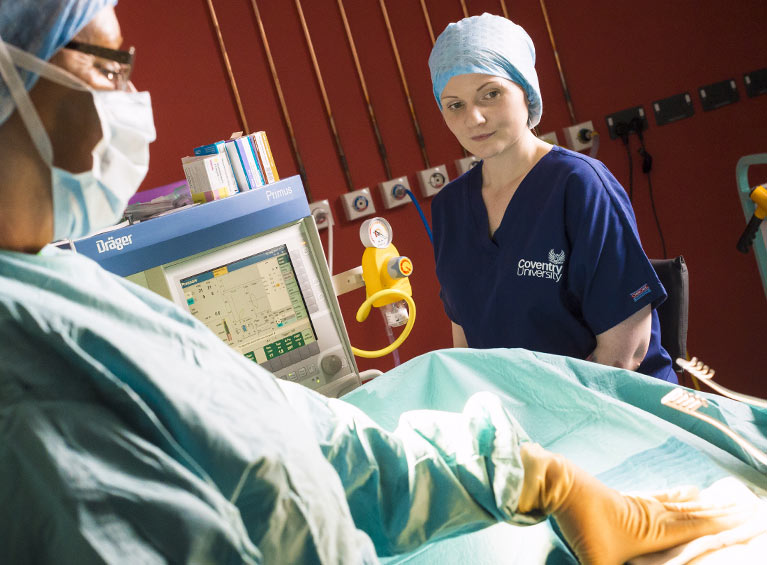
Operating theatre
Learn how to provide the right support to surgical and anaesthetic teams in our operating theatre, which is set up to accommodate procedures that would take place during hospital surgery including handwashing and infection control.
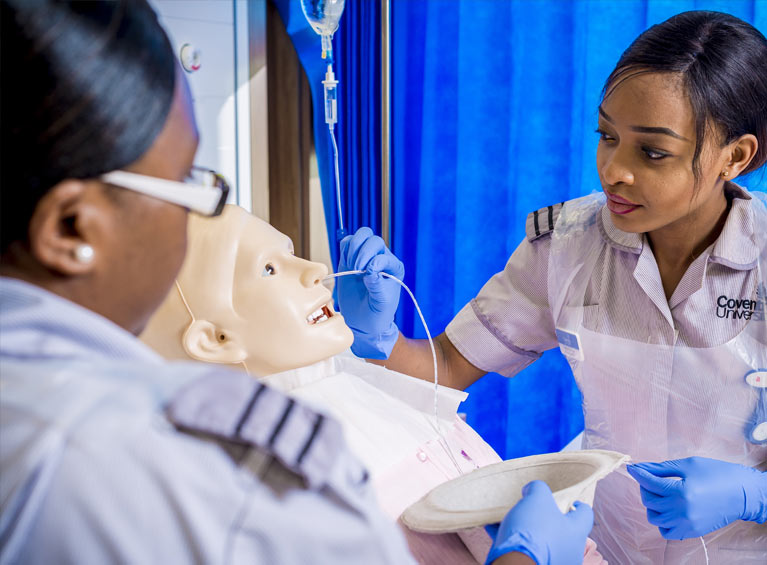
Hospital wards
At our fully adaptable wards you can learn how to perform assessments, first aid, suturing, injection techniques, use an ECG machine to review heart rates and more. You can also learn how to treat an unconscious patient by using CPR.
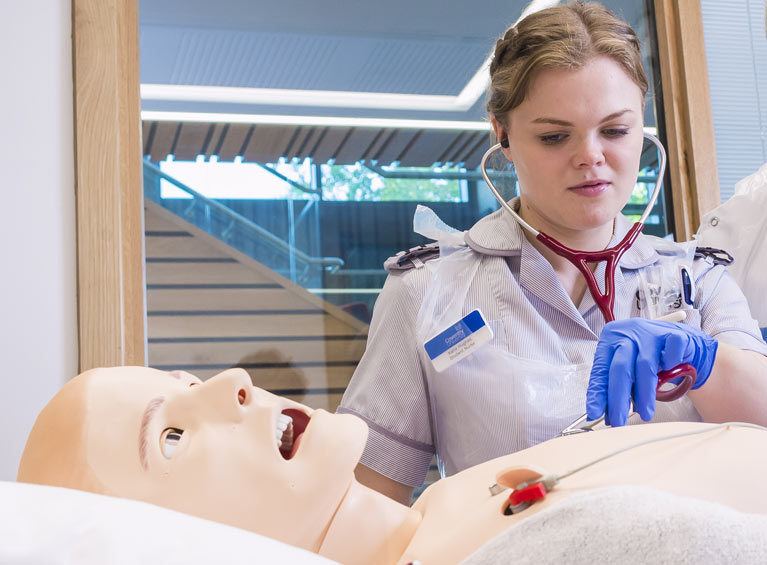
High fidelity manikins
We use high fidelity manikins that can be programmed to replicate many scenarios, ranging from critical illness through to childbirth. Students can carry out assessments and interventions by adjusting a manikin’s heart rate, blood pressure, temperature and breathing.
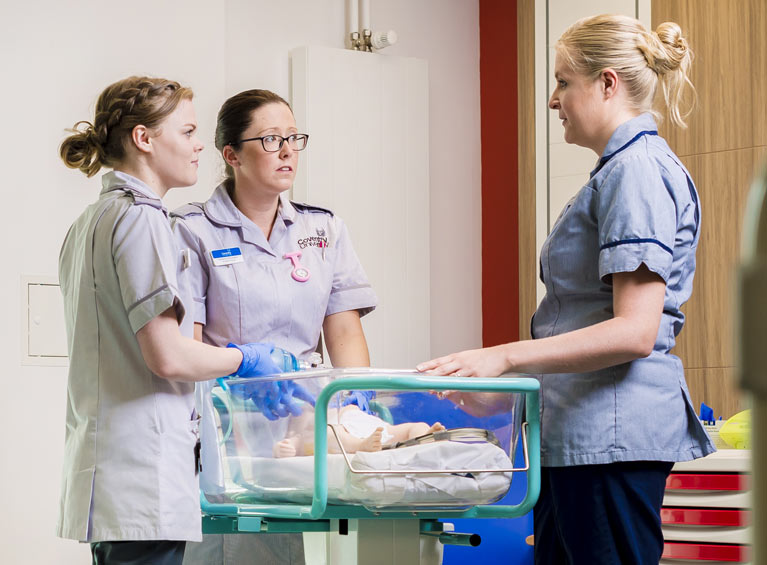
Midwifery suite
Use manikins to provide both routine and emergency care to mothers and babies and understand womens' health better.
Our excellent midwifery suite is equipped with a range of delivery facilities including water birth options.
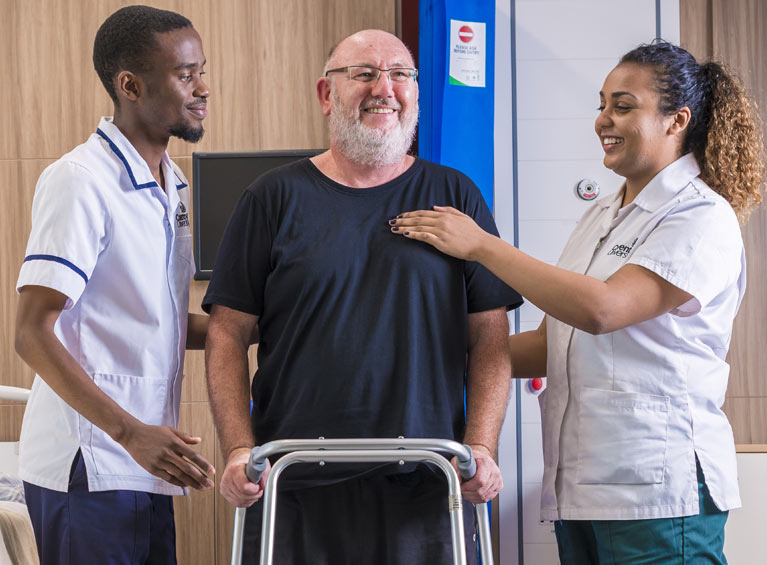
Therapy suites
By using our flexible and well-equipped treatment areas, you can learn how to assess and support someone who has difficulty doing everyday tasks following an illness.
Students can also learn how to deal with simple support techniques such as helping someone getting in and out of the bath and building patient confidence.
Simulation
Simulated learning is at the heart of our approach: using people and technology to replicate real-life situations.
Our simulated patient journey
1
Point of illness or injury
Our paramedic students are equipped to work in our real-life ambulance which simulates the journey to hospital.
2
Operating department
Following assessment, the patient is handed over to operating department practitioner students who prepare the patient for surgery using anaesthetic equipment.
3
High dependency unit and wards
Following their surgery, the patient is then transferred to one of the two four-bed wards.
4
Recovery
Recovery interventions including diet, mobility, breathing and sensory assessments are carried out in hospital and at home by you.
5
Rehabilitation and care at home
Equipped with the latest 3D virtual reality technologies, our purpose-built community houses give you the chance to experience, assess and recommend interventions.





